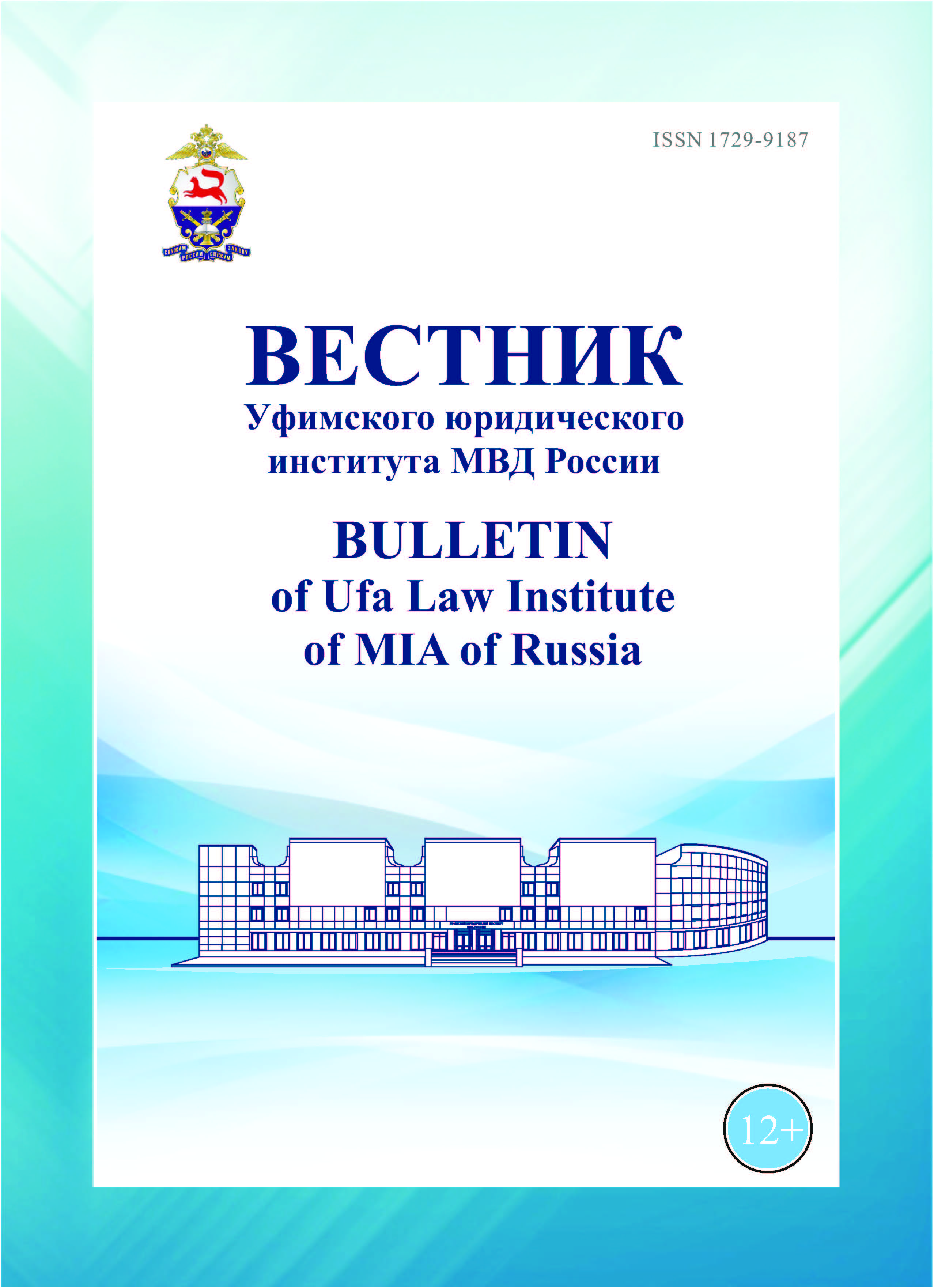UDC 343.985.5
The article touches upon issues related to the use of the achievements of modern science, which offer law enforcement officers new opportunities that allow them to identify wanted people. The formation and development of scientific knowledge regarding fingerprinting, genetics, biometrics, computer technology and cellular communications did not go unnoticed by the internal affairs bodies, their results are actively used in the implementation of operational-search and administrative measures in the process of searching and identifying citizens. The author, Based on the analysis of promising areas of scientific research and taking into account the constant progress in the field of technical means, the author comes to the conclusion that it is necessary to improve the legislation in force in the Russian Federation in this area.
missing persons, biometrics, genetics, fingerprinting, unidentified corpses, fugitives
1. Kubasov I. A., Strelnikov F. I., Lunev Yu. S. Issues of increasing the efficiency of using automated fingerprint records in the detection and investigation of crimes // Bulletin of the Voronezh Institute of the Ministry of Internal Affairs of Russia. 2020. No. 2. P. 231-236. (In Russ.)
2. Samarin N. A., Narusheva A. S. On the issue of improving the quality of fingerprinting in the internal affairs bodies // Scientific portal. 2021. No. 2 (59). P. 77-81. (In Russ.)
3. Torvald Yu. Age of criminology. M.: Progress, 1991. 203 p. (In Russ.)
4. Kirdyashkin S. N., Shmakov V. L. Automation of fingerprint records (comparative assessment of efficiency costs) // Bulletin of the Ministry of Internal Affairs of Russia. 2004. No. 5. P. 35-39. (In Russ.)
5. Meretsky N. E., Kurgannikova T. P. Modern possibilities of fingerprint identification in the detection and investigation of crimes // Bulletin of the Far East Law Institute of the Ministry of Internal Affairs of Russia. 2018. No. 3. P. 108-113. (In Russ.)
6. Kuznetsova N. I. Biological safety: theoretical and legal aspects // Bulletin of the Volgograd Academy of the Ministry of Internal Affairs of Russia. 2021. No. 3 (58). P. 65-73. (In Russ.)
7. Burkova E. Genomic registration to help // Ezh-Lawyer. 2013. No. 38. P. 5-9. (In Russ.)
8. Gribunov O. P. Means of cellular communications as a source of forensically significant information // Bulletin of the East Siberian Institute of the Ministry of Internal Affairs of Russia. 2017. No. 4. P. 137-142. (In Russ.)
9. Ishchenko E. P., Kramarenko V. P., Shevchenko E. S. Smartphone as a scientific and technical means of an investigator // Bulletin of the Kaliningrad branch of the St. Petersburg University of the Ministry of Internal Affairs of Russia. 2017. No. 4. P. 9-12. (In Russ.)
10. Evteev S. P. Poluchenie komp'yuternoy informacii: nereshennye voprosy i vozmozhnosti ispol'zovaniya rezul'tatov operativno-rozysknoy deyatel'nosti v ugolovnom processe // Vestnik VIPK MVD Rossii. 2017. № 1. S. 42-50.
11. Groshikov V. A. Ispol'zovanie videonablyudeniya v raskrytii tyazhkih prestupleniy // Vestnik Volgogradskoy akademii MVD Rossii. 2015. № 1. S. 95-98.
12. Mishin V. A. Cifrovye tehnologii, primenyaemye v oblasti preduprezhdeniya pravonarusheniy (na primere apparatno-programmnogo kompleksa «Bezopasnyy gorod») // Problemy pravoohranitel'noy deyatel'nosti. 2021. № 3. S. 60-64.
13. Kuz'min N. A., Polovinka A. Yu. O nekotoryh vozmozhnostyah ispol'zovaniya iskusstvennogo intellekta v sisteme APK «Bezopasnyy gorod» pri raskrytii prestupleniy v g. Moskve // Vestnik Moskovskogo universiteta MVD Rossii. 2021. № 5. S. 177-180.









